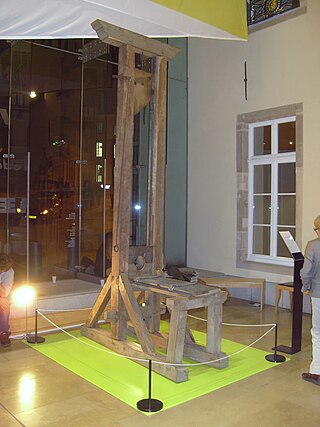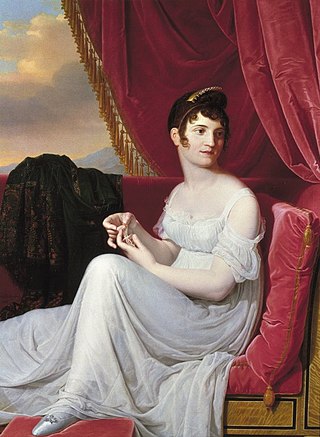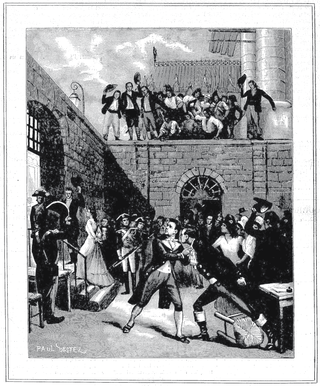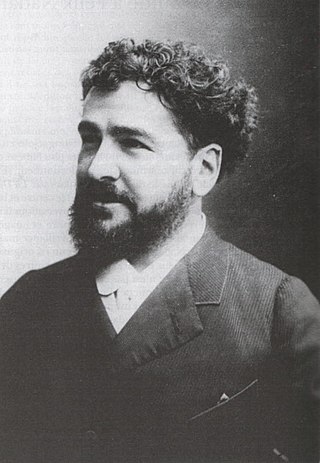Related Research Articles

A guillotine is an apparatus designed for efficiently carrying out executions by beheading. The device consists of a tall, upright frame with a weighted and angled blade suspended at the top. The condemned person is secured with a pillory at the bottom of the frame, holding the position of the neck directly below the blade. The blade is then released, swiftly and forcefully decapitating the victim with a single, clean pass; the head falls into a basket or other receptacle below.

A masquerade ball is an event in which many participants attend in costume wearing a mask. Less formal "costume parties" may be a descendant of this tradition. A masquerade ball usually encompasses music and dancing. These nighttime events are used for entertainment and celebrations.

Jacques-Nicolas Billaud-Varenne, also known as Jean Nicolas or by his nickname, the Righteous Patriot, was a French lawyer and a major figure in the French Revolution. A close associate of Georges Danton and Maximilien Robespierre, he was one of the most militant members of the Committee of Public Safety, and is often considered a key architect of the Reign of Terror.
In the historiography of the French Revolution, the Thermidorian Reaction is the common term for the period between the ousting of Maximilien Robespierre on 9 Thermidor II, or 27 July 1794, and the inauguration of the French Directory on 2 November 1795.

Jean-Lambert Tallien was a French politician of the revolutionary period. Though initially an active agent of the Reign of Terror, he eventually clashed with its leader, Maximilien Robespierre, and is best known as one of the key figures of the Thermidorian Reaction that led to the fall of Robespierre and the end of the Terror.

Thérésa Cabarrus, Madame Tallien, was a Spanish-born French noble, salon holder and social figure during the Revolution. Later she became Princess of Chimay.

Picpus Cemetery is the largest private cemetery in Paris, France, located in the 12th arrondissement. It was created from land seized from the convent of the Chanoinesses de St-Augustin, during the French Revolution. Just minutes away from where the guillotine was set up, it contains 1,306 victims executed between 14 June and 27 July 1794, during the height and last phase of the Reign of Terror.

Fashion in the period 1795–1820 in European and European-influenced countries saw the final triumph of undress or informal styles over the brocades, lace, periwigs and powder of the earlier 18th century. In the aftermath of the French Revolution, no one wanted to appear to be a member of the French aristocracy, and people began using clothing more as a form of individual expression of the true self than as a pure indication of social status. As a result, the shifts that occurred in fashion at the turn of the 19th century granted the opportunity to present new public identities that also provided insights into their private selves. Katherine Aaslestad indicates how "fashion, embodying new social values, emerged as a key site of confrontation between tradition and change."

Fashion in France is an important subject in the culture and country's social life, as well, being an important part of its economy.

The Incroyables and their female counterparts, the Merveilleuses, were members of a fashionable aristocratic subculture in Paris during the French Directory (1795–1799). Whether as catharsis or in a need to reconnect with other survivors of the Reign of Terror, they greeted the new regime with an outbreak of luxury, decadence, and even silliness. They held hundreds of balls and started fashion trends in clothing and mannerisms that today seem exaggerated, affected, or even effete. They were also mockingly called "incoyable" or "meveilleuse", without the letter R, reflecting their upper class accent in which that letter was lightly pronounced, almost inaudibly. When this period ended, society took a more sober and modest turn.

The White Terror was a period during the French Revolution in 1795 when a wave of violent attacks swept across much of France. The victims of this violence were people identified as being associated with the Reign of Terror – followers of Robespierre and Marat, and members of local Jacobin clubs. The violence was perpetrated primarily by those whose relatives or associates had been victims of the Great Terror, or whose lives and livelihoods had been threatened by the government and its supporters before the Thermidorean Reaction. Principally, these were, in Paris, the Muscadins, and in the countryside, monarchists, supporters of the Girondins, those who opposed the Civil Constitution of the Clergy and those otherwise hostile to the Jacobin political agenda.

Thermidor is a four-act dramatic play by the 19th-century French playwright Victorien Sardou.

Octave Uzanne was a 19th-century French bibliophile, writer, publisher, and journalist.

Fashion in the twenty years between 1775 and 1795 in Western culture became simpler and less elaborate. These changes were a result of emerging modern ideals of selfhood, the declining fashionability of highly elaborate Rococo styles, and the widespread embrace of the rationalistic or "classical" ideals of Enlightenment philosophes.

Jean-François Autié was a hairdresser to Queen Marie Antoinette. He was the youngest brother of Léonard-Alexis Autié and Pierre Autié, who were also hairdressers at the royal court. All three brothers used the professional name of Monsieur Léonard.

Symbolism in the French Revolution was a device to distinguish and celebrate the main features of the French Revolution and ensure public identification and support. In order to effectively illustrate the differences between the new Republic and the old regime, the leaders needed to implement a new set of symbols to be celebrated instead of the old religious and monarchical symbolism. To this end, symbols were borrowed from historic cultures and redefined, while those of the old regime were either destroyed or reattributed acceptable characteristics. New symbols and styles were put in place to separate the new, Republican country from the monarchy of the past. These new and revised symbols were used to instill in the public a new sense of tradition and reverence for the Enlightenment and the Republic.
Angélique-Marie Élisabeth Émilie de Matignon, née Le Tonnelier de Breteuil, married Countesse Goyon de Matignon and known in history as Madame de Matignon, was a prominent fashion figure during the French Ancien Régime, known for her extravagant hairdressing expenses.

The Coup d'état of 9 Thermidor or the Fall of Maximilien Robespierre is the series of events beginning with Maximilien Robespierre's address to the National Convention on 8 Thermidor Year II, his arrest the next day, and his execution on 10 Thermidor Year II. In the speech of 8 Thermidor, Robespierre spoke of the existence of internal enemies, conspirators, and calumniators, within the Convention and the governing Committees. He refused to name them, which alarmed the deputies who feared Robespierre was preparing another purge of the Convention.
Gay balls, cross-dressing balls or drag balls, depending on the place, time, and type, were public or private balls, celebrated mainly in the first third of the twentieth century, where cross-dressing and ballroom dancing with same sex partners was allowed. By the 1900s, the balls had become important cultural events for gays and lesbians, even attracting tourists. Their golden age was during the Interwar period, mainly in Berlin and Paris, even though they could be found in many big cities in Europe and the Americas such as Mexico City and New York City.
René-François Dumas, born 14 December 1753 in Jussey, in the bailiwick of Amont, was a revolutionary French lawyer and politician, regarded as a "Robespierrist", who died on 28 July 1794 at Paris.
References
- 1 2 Ronald Schechter, "Gothic Thermidor: The Bals des victimes, the Fantastic, and the Production of Historical Knowledge in Post-Terror France," Representations, No. 61, (Winter, 1998), pp. 78, 79.
- ↑ The Times, 29 July 1797, p. 3: "Great dissentions having taken place respecting etiquette and precedency at the Victims Ball at Paris, it has been determined that the Guillotine should have the first rank, and open the ball..."
- ↑ David A. Bell, The First Total War (Houghton Mifflin, 2007), p. 192.
- ↑ Octave Uzanne, The Frenchwoman of the Century (London, J.C. Nimmo, 1886), pp. 9-12.
- 1 2 Lady Catherine Hannah Charlotte Jackson, The French Court and Society: Reign of Louis XVI and First Empire, vol. 2 (London, Richard Bentley & Son, 1881), 207-210,
- 1 2 Octave Uzanne, The Frenchwoman of the Century (London, J.C. Nimmo, 1886), p. 12.
- ↑ Thomas Carlyle,The French Revolution: A History, vol.3 (Leipzig: Bernhard Tauchnitz, 1851), Bk. 7, Ch. 2, 347-50.
- ↑ "The Tragedy of the Temple," Catholic World 21 (April-Sept. 1875), pp. 227-28
- ↑ "Women's Fashions Under the Influence of Guillotine,"
- ↑ Lady Catherine Hannah Charlotte Jackson, The French Court and Society: Reign of Louis XVI and First Empire, vol. 2 (London, Richard Bentley & Son, 1881), 207,
- ↑ Octave Uzanne, The Frenchwoman of the Century (London, J.C. Nimmo, 1886), pp. 13-14.
- ↑ The Times, 9 September 1796, p. 2: "The Ladies who turn up their hair behind, a la guillotine, wish, no doubt, to impress their suitors..."
- ↑ Franðcois Gendron, The Gilded Youth of Thermidor (Montreal: McGill-Queen's University Press, 1993), p. 32.
- Joseph Clarke, Commemorating the Dead in Revolutionary France: Revolution and Remembrance, 1789-1799 (Cambridge: Cambridge University Press, 2007).
- Katell Le Bourhis, Age of Napoleon: Costume from Revolution to Empire, 1789-1815 (New York: Metropolitan Museum of Art, 1990).
- Aileen Ribeiro, Fashion in the French Revolution (New York: Holmes & Meier, 1988).